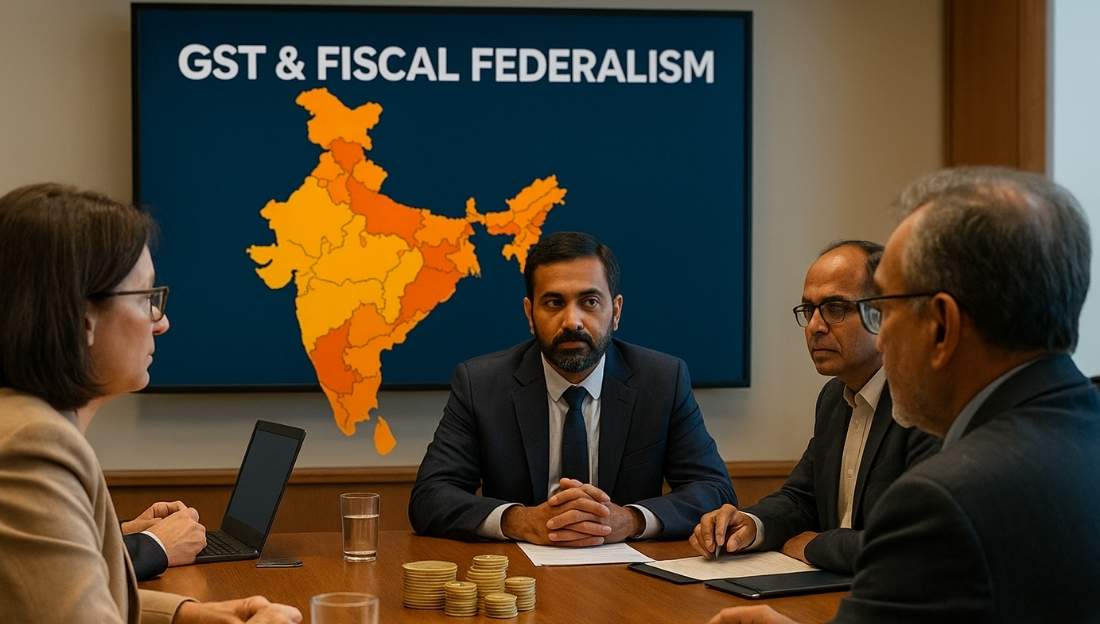Recent data (October 2025) shows that despite record-high GST collections of ₹1.95 lakh crore, 16 states and UTs are earning less revenue than pre-GST levels, highlighting growing fiscal imbalance and uneven revenue growth across states.
Impact of GST on the Tax Landscape
- Unified Structure: GST merged multiple taxes into one, easing compliance and boosting transparency.
- Shift in Revenue Flow: States lost direct control over certain taxes; revenue now depends on the GST Council’s formula.
- Dependence on the Centre: States relied heavily on GST compensation cess (2017–2022) to offset initial revenue losses.
- Short-term Gains: Early years saw revenue surges due to better tax compliance and formalization.

State-wise Performance
- High Performers: Maharashtra, Karnataka, Gujarat, Tamil Nadu, and Haryana — benefited from industrial and service sector dominance.
- Lagging States: Punjab, Madhya Pradesh, Odisha, Chhattisgarh, and J&K — experienced revenue stagnation or decline.
- Northeastern States: Mizoram, Nagaland, and Sikkim witnessed slight improvement due to low base effects and GST transfers.
- Post-Compensation Stress: Fiscal strain increased after the end of GST compensation in June 2022, especially for smaller and agrarian states.
Fiscal Federalism Concerns
- Centre–State Imbalance: 20 of 36 states/UTs collect less than 40% of total revenue from GST.
- Revenue Underperformance: The 15th Finance Commission had projected a 7% GST-to-GDP ratio, but it remains around 2.6%.
- Reduced Fiscal Space: Lower revenues restrict states’ capacity for social and capital expenditure.
- Administrative Challenges: Refund delays, multiple tax slabs, and compliance burdens hinder efficiency, especially for smaller states.
Way Forward
- The GST Council (2025) is reviewing rate rationalization and compensation mechanisms to help weaker states.
- The Centre’s digital GST 2.0 initiative aims to enhance real-time compliance tracking and reduce input credit fraud.
- Strengthening data-sharing, IT systems, and predictable transfers can restore fiscal trust.
- Future reforms must ensure cooperative federalism, giving states both autonomy and stability in revenue planning.
Conclusion
While GST has streamlined India’s taxation framework, its uneven revenue impact across states reveals a gap in fiscal equity. Strengthening GST’s design through simpler rates, robust IT infrastructure, and fair compensation mechanisms is essential to achieve both economic efficiency and fiscal balance — the twin pillars of true cooperative federalism.
This topic is available in detail on our main website.





